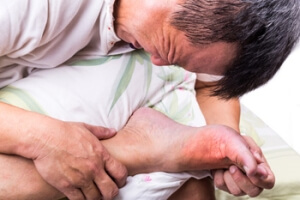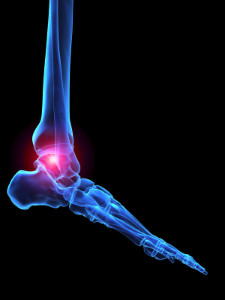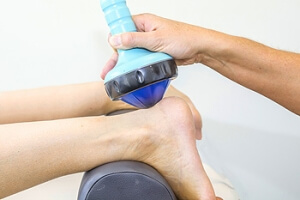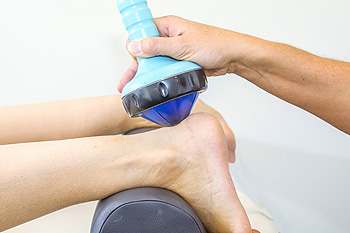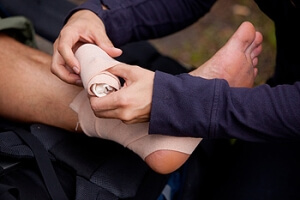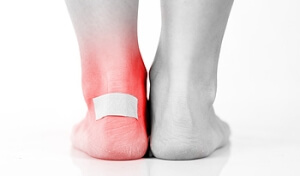Super User
Why Are High Heels Bad For My Feet?
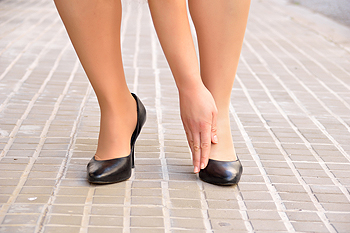 High heels are a popular choice for many people as they can make you look taller and make your legs appear longer, your feet smaller, and your body thinner. However, none of these perceived benefits are worth the damage to your feet and ankles that high heels can cause. Over time, wearing high heels can alter the muscle balance around the ankle joint, making the ankles weak and unstable, affecting your balance, and raising your risk of ankle sprains. The Achilles tendon may shorten and stiffen. In people who wear high heels often, the tendons can become so short and stiff that switching to flats causes calf pain. Even if you aren’t quite ready to give up your high heels, there are measures that you can take to prevent further damage and reduce your risk of injury. Look for high heels that are no taller than two inches and have thicker heels, alternate between high heels and flats often, wearing your high heels for no more than two or three days per week, and stretch your feet and ankles regularly. To learn more about the connection between footwear and foot health, please consult with a podiatrist.
High heels are a popular choice for many people as they can make you look taller and make your legs appear longer, your feet smaller, and your body thinner. However, none of these perceived benefits are worth the damage to your feet and ankles that high heels can cause. Over time, wearing high heels can alter the muscle balance around the ankle joint, making the ankles weak and unstable, affecting your balance, and raising your risk of ankle sprains. The Achilles tendon may shorten and stiffen. In people who wear high heels often, the tendons can become so short and stiff that switching to flats causes calf pain. Even if you aren’t quite ready to give up your high heels, there are measures that you can take to prevent further damage and reduce your risk of injury. Look for high heels that are no taller than two inches and have thicker heels, alternate between high heels and flats often, wearing your high heels for no more than two or three days per week, and stretch your feet and ankles regularly. To learn more about the connection between footwear and foot health, please consult with a podiatrist.
High heels have a history of causing foot and ankle problems. If you have any concerns about your feet or ankles, contact one of our podiatrists from New Tampa Foot & Ankle. Our doctors can provide the care you need to keep you pain-free and on your feet.
Effects of High Heels on the Feet
High heels are popular shoes among women because of their many styles and societal appeal. Despite this, high heels can still cause many health problems if worn too frequently.
Which Parts of My Body Will Be Affected by High Heels?
- Ankle Joints
- Achilles Tendon – May shorten and stiffen with prolonged wear
- Balls of the Feet
- Knees – Heels cause the knees to bend constantly, creating stress on them
- Back – They decrease the spine’s ability to absorb shock, which may lead to back pain. The vertebrae of the lower back may compress.
What Kinds of Foot Problems Can Develop from Wearing High Heels?
- Corns
- Calluses
- Hammertoe
- Bunions
- Morton’s Neuroma
- Plantar Fasciitis
How Can I Still Wear High Heels and Maintain Foot Health?
If you want to wear high heeled shoes, make sure that you are not wearing them every day, as this will help prevent long term physical problems. Try wearing thicker heels as opposed to stilettos to distribute weight more evenly across the feet. Always make sure you are wearing the proper shoes for the right occasion, such as sneakers for exercising. If you walk to work, try carrying your heels with you and changing into them once you arrive at work. Adding inserts to your heels can help cushion your feet and absorb shock. Full foot inserts or metatarsal pads are available.
If you have any questions please feel free to contact our office located in Wesley Chapel, FL . We offer the newest diagnostic and treatment technologies for all your foot and ankle needs.
What Is Anterior Ankle Impingement Syndrome?
 Anterior ankle impingement syndrome, also known as footballer’s ankle or athlete’s ankle, is an umbrella term used to describe soft tissue in the ankle getting pinched by bone. Tiny, repetitive traumas to the ankle, usually incurred while playing sports, leads the body to produce extra bone tissue in the area as a defense mechanism to prevent further injury. This can cause symptoms such as ankle pain, swelling, inflammation, a decreased range of motion, a loss of muscle strength, numbness in the toes, and a popping or crackling sound while walking or moving the affected ankle. These symptoms can interfere with participating in daily activities and require medical intervention to improve. If you suspect that you may have anterior ankle impingement syndrome, please consult with a podiatrist.
Anterior ankle impingement syndrome, also known as footballer’s ankle or athlete’s ankle, is an umbrella term used to describe soft tissue in the ankle getting pinched by bone. Tiny, repetitive traumas to the ankle, usually incurred while playing sports, leads the body to produce extra bone tissue in the area as a defense mechanism to prevent further injury. This can cause symptoms such as ankle pain, swelling, inflammation, a decreased range of motion, a loss of muscle strength, numbness in the toes, and a popping or crackling sound while walking or moving the affected ankle. These symptoms can interfere with participating in daily activities and require medical intervention to improve. If you suspect that you may have anterior ankle impingement syndrome, please consult with a podiatrist.
Sports related foot and ankle injuries require proper treatment before players can go back to their regular routines. For more information, contact one of our podiatrists of New Tampa Foot & Ankle. Our doctors can provide the care you need to keep you pain-free and on your feet.
Sports Related Foot and Ankle Injuries
Foot and ankle injuries are a common occurrence when it comes to athletes of any sport. While many athletes dismiss the initial aches and pains, the truth is that ignoring potential foot and ankle injuries can lead to serious problems. As athletes continue to place pressure and strain the area further, a mild injury can turn into something as serious as a rupture and may lead to a permanent disability. There are many factors that contribute to sports related foot and ankle injuries, which include failure to warm up properly, not providing support or wearing bad footwear. Common injuries and conditions athletes face, including:
- Plantar Fasciitis
- Plantar Fasciosis
- Achilles Tendinitis
- Achilles Tendon Rupture
- Ankle Sprains
Sports related injuries are commonly treated using the RICE method. This includes rest, applying ice to the injured area, compression and elevating the ankle. More serious sprains and injuries may require surgery, which could include arthroscopic and reconstructive surgery. Rehabilitation and therapy may also be required in order to get any recovering athlete to become fully functional again. Any unusual aches and pains an athlete sustains must be evaluated by a licensed, reputable medical professional.
If you have any questions please feel free to contact our office located in Wesley Chapel, FL . We offer the newest diagnostic and treatment technologies for all your foot and ankle needs.
Could I Get Gout?
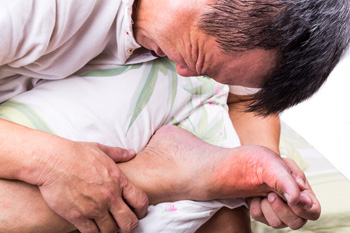 Gout is a form of arthritis in which an overabundance of uric acid in the bloodstream leads to the formation of urea crystals in the joints, causing a painful gout flareup. These flare ups usually occur in the big toe joint and cause symptoms such as redness, swelling, warmth, and intense pain. While gout can affect anybody, certain people are more at risk of developing it than others. These include men, those who are obese, those who have hypertension, diabetes, or poor kidney function, and those who drink alcohol, sugary beverages, or consume a diet high in purines, which are found in red meat and certain types of seafood. Gout may flare up once or become a chronic condition. If you have had a gout flareup or are at risk for gout, please speak with a podiatrist.
Gout is a form of arthritis in which an overabundance of uric acid in the bloodstream leads to the formation of urea crystals in the joints, causing a painful gout flareup. These flare ups usually occur in the big toe joint and cause symptoms such as redness, swelling, warmth, and intense pain. While gout can affect anybody, certain people are more at risk of developing it than others. These include men, those who are obese, those who have hypertension, diabetes, or poor kidney function, and those who drink alcohol, sugary beverages, or consume a diet high in purines, which are found in red meat and certain types of seafood. Gout may flare up once or become a chronic condition. If you have had a gout flareup or are at risk for gout, please speak with a podiatrist.
Gout is a foot condition that requires certain treatment and care. If you are seeking treatment, contact one of our podiatrists from New Tampa Foot & Ankle. Our doctors will treat your foot and ankle needs.
What Is Gout?
Gout is a type of arthritis caused by a buildup of uric acid in the bloodstream. It often develops in the foot, especially the big toe area, although it can manifest in other parts of the body as well. Gout can make walking and standing very painful and is especially common in diabetics and the obese.
People typically get gout because of a poor diet. Genetic predisposition is also a factor. The children of parents who have had gout frequently have a chance of developing it themselves.
Gout can easily be identified by redness and inflammation of the big toe and the surrounding areas of the foot. Other symptoms include extreme fatigue, joint pain, and running high fevers. Sometimes corticosteroid drugs can be prescribed to treat gout, but the best way to combat this disease is to get more exercise and eat a better diet.
If you have any questions please feel free to contact our office located in Wesley Chapel, FL . We offer the newest diagnostic and treatment technologies for all your foot and ankle needs.
Arthritis and Joint Foot Pain
Arthritis is a common medical condition worldwide, and can cause severe pain and discomfort. When it occurs in the feet, it may be difficult to walk, in addition to completing daily activities. There are several different forms of arthritis, and gout generally affects the joints in the big toe. Lupus can affect the joints in the feet, and arthritis can gradually develop. Many patients find it is beneficial to take specific medications that may help with the inflammation arthritis can cause. If you have joint pain in your feet, it is strongly suggested that you are under the care of a podiatrist who can help you to manage this condition.
Arthritis can be a difficult condition to live with. If you are seeking treatment, contact one of our podiatrists from New Tampa Foot & Ankle. Our doctors can provide the care you need to keep you pain-free and on your feet.
Arthritic Foot Care
Arthritis is a joint disorder that involves the inflammation of different joints in your body, such as those in your feet. Arthritis is often caused by a degenerative joint disease and causes mild to severe pain in all affected areas. In addition to this, swelling and stiffness in the affected joints can also be a common symptom of arthritis.
In many cases, wearing ill-fitting shoes can worsen the effects and pain of arthritis. Wearing shoes that have a lower heel and extra room can help your feet feel more comfortable. In cases of rheumatoid arthritis, the arch in your foot may become problematic. Buying shoes with proper arch support that contour to your feet can help immensely.
Alleviating Arthritic Pain
- Exercises that stretch the foot can prevent further pain and injury and increase mobility
- Most of the pain can be alleviated with anti-inflammatory drugs, heat, and topical medications
- Massages can help temporarily alleviate pain.
It is best to see your doctor for the treatment that is right for your needs and symptoms. Conditions vary, and a podiatrist can help you determine the right method of care for your feet.
If you have any questions, please feel free to contact our office located in Wesley Chapel, FL . We offer the newest diagnostic tools and technology to treat your foot and ankle needs.
Shockwave Therapy May Offer Relief From Achilles Tendonitis
Achilles tendonitis occurs when this large tendon in the back of the leg (which connects the calf muscles to the heel bone) becomes inflamed or, in some cases, torn due to overuse or injury. The pain often associated with Achilles tendonitis can present itself in different ways, at different times: in the back of the heel upon waking, after sitting or when the site is pressed on, a shooting, burning or piercing pain in the foot, or foot pain that lessens after resting or refraining from athletic activities. In milder cases of Achilles tendonitis where inflammation is the cause of the pain, a podiatrist may use treatment methods such as rest, orthotics, lasers, or taping. If the tendon is torn and needs to be repaired, the podiatrist may utilize extracorporeal shockwave therapy (ESWT) to repair the tendon without the need for surgery. ESWT is a process whereby low-energy shockwaves are directed onto the damaged site, which desensitizes the nerves to reduce pain, while increasing blood and boosting the body’s own natural healing activity. Contact a podiatrist to see if the pain in your Achilles tendon may be lessened with ESWT.
Shockwave therapy is a treatment commonly used to treat various injuries and conditions, particularly plantar fasciitis in the feet. To learn more, consult with one of our podiatrists from New Tampa Foot & Ankle. Our doctors can provide the care you need to keep you pain-free and on your feet.
Shockwave Therapy
Shockwave therapy is a new treatment option designed to treat bone conditions such as tennis elbow, shoulder pain, and others. Shockwave therapy uses high intensity sound waves that are directed to the affected tissues of the body with pinpoint accuracy. The effects are very beneficial, leading to a production of collagen fibers, eliminating inflammation.
Who Benefits from Shockwave?
Shockwave is recommended for patients suffering from heel pain and associated problems. Heel pain is a common condition which can be caused by obesity, overexertion, and spending a substantial amount of time on hard floors with your feet exposed and unsupported.
Fast and Easy
The therapy is actually a simple process that can leave patients feeling better the very next day. Shockwave therapy is not as dramatic as it sounds. It enables more blood flow to effected areas, addressing the source of the problem and allowing treatment to last for a long time.
Treatment & Recovery Time
Shockwave treatment will enable your feet to recover quickly. This is especially important since surgery is not required. It is cost effective and does not require the use of anesthesia. This treatment is a better option to surgery, since it is proven safe.
If you have any questions, please feel free to contact our office located in Wesley Chapel, FL . We offer the newest diagnostic and treatment technologies for all your foot and ankle needs.
Treating Heel Pain with Shockwave Therapy
Shockwave therapy is one treatment option for plantar fasciitis, a condition that causes heel and foot inflammation and pain. This type of injury is often caused by overworking the feet. Heel pain is most common in people that exercise often, individuals who are overweight, and people whose profession require them to stand for long periods of time.
Heel pain can be caused by a number of problems including ill-fitting shoes, strenuous exercise routines or work hazards. Simple treatment options involve buying new shoes, taking ibuprofen, doing heel and foot exercises, and resting your feet. For severe cases, shockwave therapy can be considered a more viable form of treatment.
Shockwave therapy should be considered for patients that have had unsuccessful treatment or whose heel pain has lasted for more than six months. In shockwave therapy, a device delivers shockwaves to the patient’s body, which jumpstart the body’s repair mechanisms. These mechanisms then begin working more effectively to repair damage done to the heel area.
Shockwave therapy also helps eliminate pain in the heel area. When the body’s natural repair mechanisms are triggered, tissue healing in the body is sped up. This leads to pain reduction after pain transmission nerves are stimulated.
Shockwave therapy eliminates the risk factors associated with surgery, such as the use of anesthetics, and is less invasive. Since this technique also helps improve the body’s natural healing techniques, recovery time should be shorter than surgical procedures.
Discomfort issues can also be a side effect of treatment. Short-term issues normally include skin bruising, minor pain during and after treatment, swelling of the heel, and discolored tissue. However, these side effects of shockwave therapy usually disappear after a few days. The fast recovery time of shockwave therapy makes it easy for patients to return to their daily routines.
Like most types of treatments, surgeries, and medications, shockwave therapy is not for everyone. Potential patients with heart conditions and people with pacemakers should not be considered for this technique. People on certain types of medications, usually medications affecting blood clotting, would be ineligible for shockwave therapy. Children and pregnant women should avoid this treatment option as well.
Overall, shockwave therapy could be a great option for heel pain. It is less invasive than surgery, helps trigger natural healing mechanisms, and should be considered by people who have had long bouts of heel pain or tried conventional treatment options that were unsuccessful.
Several Types of Foot Pain
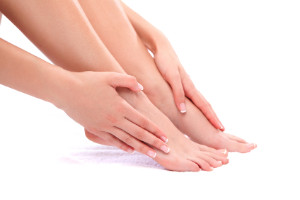 There are so many different reasons why people experience ankle or foot pain. Sometimes pain may build up gradually from wearing shoes that do not fit properly, or pain can occur instantly due to a sudden injury like a car accident or fall. Pain in the feet can even be caused by underlying conditions like arthritis or diabetes. Other causes of foot and ankle pain may include gout, stress fractures, ankle sprains, and most commonly, Achilles tendon injuries. Gout is considered to be a form of arthritis and can develop due to genetic factors or from a diet that contains high levels of purines which are found in organ meats, certain types of fish, alcohol, and other sugary beverages. People who enjoy running may endure a stress fracture which is defined as a hairline fracture in the bones of the feet. Ankle sprains may occur just by stepping off a curb incorrectly or from direct impact during a sporting event. Nevertheless, ankle sprains typically require immediate attention to ensure they are diagnosed correctly and treated accordingly. Achilles tendon injuries are usually caused by a sudden increase of repetitive activity where too much stress is put on the tendon too quickly. This condition is also referred to as an overuse injury and athletes have a high risk for developing this disorder, as well as individuals with flat feet. If you or someone you know is living with foot or ankle pain, it is strongly suggested to seek the counsel of a podiatrist.
There are so many different reasons why people experience ankle or foot pain. Sometimes pain may build up gradually from wearing shoes that do not fit properly, or pain can occur instantly due to a sudden injury like a car accident or fall. Pain in the feet can even be caused by underlying conditions like arthritis or diabetes. Other causes of foot and ankle pain may include gout, stress fractures, ankle sprains, and most commonly, Achilles tendon injuries. Gout is considered to be a form of arthritis and can develop due to genetic factors or from a diet that contains high levels of purines which are found in organ meats, certain types of fish, alcohol, and other sugary beverages. People who enjoy running may endure a stress fracture which is defined as a hairline fracture in the bones of the feet. Ankle sprains may occur just by stepping off a curb incorrectly or from direct impact during a sporting event. Nevertheless, ankle sprains typically require immediate attention to ensure they are diagnosed correctly and treated accordingly. Achilles tendon injuries are usually caused by a sudden increase of repetitive activity where too much stress is put on the tendon too quickly. This condition is also referred to as an overuse injury and athletes have a high risk for developing this disorder, as well as individuals with flat feet. If you or someone you know is living with foot or ankle pain, it is strongly suggested to seek the counsel of a podiatrist.
Foot Pain
Foot pain can be extremely painful and debilitating. If you have a foot pain, consult with one of our podiatrists from New Tampa Foot & Ankle. Our doctors will assess your condition and provide you with quality foot and ankle treatment.
Causes
Foot pain is a very broad condition that could be caused by one or more ailments. The most common include:
- Bunions
- Hammertoes
- Plantar Fasciitis
- Bone Spurs
- Corns
- Tarsal Tunnel Syndrome
- Ingrown Toenails
- Arthritis (such as Gout, Rheumatoid, and Osteoarthritis)
- Flat Feet
- Injury (from stress fractures, broken toe, foot, ankle, Achilles tendon ruptures, and sprains)
- And more
Diagnosis
To figure out the cause of foot pain, podiatrists utilize several different methods. This can range from simple visual inspections and sensation tests to X-rays and MRI scans. Prior medical history, family medical history, and any recent physical traumatic events will all be taken into consideration for a proper diagnosis.
Treatment
Treatment depends upon the cause of the foot pain. Whether it is resting, staying off the foot, or having surgery; podiatrists have a number of treatment options available for foot pain.
If you have any questions, please feel free to contact our office located in Wesley Chapel, FL . We offer the newest diagnostic and treatment technologies for all your foot care needs.
Swollen Ankles and Pregnancy
 A common symptom of pregnancy that many women experience is swollen ankles. This can happen as a result of the growing fetus, and may become worse in the warmer weather. Additionally, it can be uncomfortable as the pregnancy progresses, and relief may be found when specific lifestyle changes are implemented. These can include drinking plenty of fresh water daily, frequently elevating the feet, and it may help to sleep on the left side. Many women find that it may help to refrain from crossing the legs, in addition to exercising, and performing specific stretches. If you would like more information about how pregnancy affects the feet and ankles, please consult with a podiatrist.
A common symptom of pregnancy that many women experience is swollen ankles. This can happen as a result of the growing fetus, and may become worse in the warmer weather. Additionally, it can be uncomfortable as the pregnancy progresses, and relief may be found when specific lifestyle changes are implemented. These can include drinking plenty of fresh water daily, frequently elevating the feet, and it may help to sleep on the left side. Many women find that it may help to refrain from crossing the legs, in addition to exercising, and performing specific stretches. If you would like more information about how pregnancy affects the feet and ankles, please consult with a podiatrist.
Pregnant women with swollen feet can be treated with a variety of different methods that are readily available. For more information about other cures for swollen feet during pregnancy, consult with one of our podiatrists from New Tampa Foot & Ankle. Our doctors will attend to all of your foot and ankle needs.
What Foot Problems Can Arise During Pregnancy?
One problem that can occur is overpronation, which occurs when the arch of the foot flattens and tends to roll inward. This can cause pain and discomfort in your heels while you’re walking or even just standing up, trying to support your baby.
Another problem is edema, or swelling in the extremities. This often affects the feet during pregnancy but tends to occur in the later stages.
How Can I Keep My Feet Healthy During Pregnancy?
- Wearing orthotics can provide extra support for the feet and help distribute weight evenly
- Minimize the amount of time spent walking barefoot
- Wear shoes with good arch support
- Wear shoes that allow for good circulation to the feet
- Elevate feet if you experience swelling
- Massage your feet
- Get regular, light exercise, such as walking, to promote blood circulation to the feet
If you have any questions please feel free to contact our office located in Wesley Chapel, FL . We offer the newest diagnostic and treatment technologies for all your foot and ankle needs.
Ankle Sprains and Reinjury
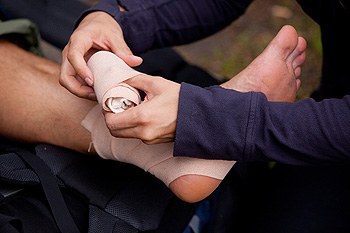 An ankle sprain occurs when you overstretch or tear one or more of the ligaments in your ankle. This injury can range from a mild sprain with slightly overstretched ligaments, to a severe sprain in which the ligaments have fully ruptured. The time that it takes to fully recover from an ankle sprain varies depending on the severity of the injury. Ankle sprains are common in people who play sports or run. After being sidelined by an ankle sprain, many athletes are eager to get back to exercising before they have fully recovered, leading to recurrent ankle sprains and injuries. If you have sprained your ankle, it is important to give the ankle enough time to heal fully. You can help the healing process along by resting your ankle and doing simple stretches to retain flexibility and range of motion. If you have sprained your ankle, please seek the care of a podiatrist.
An ankle sprain occurs when you overstretch or tear one or more of the ligaments in your ankle. This injury can range from a mild sprain with slightly overstretched ligaments, to a severe sprain in which the ligaments have fully ruptured. The time that it takes to fully recover from an ankle sprain varies depending on the severity of the injury. Ankle sprains are common in people who play sports or run. After being sidelined by an ankle sprain, many athletes are eager to get back to exercising before they have fully recovered, leading to recurrent ankle sprains and injuries. If you have sprained your ankle, it is important to give the ankle enough time to heal fully. You can help the healing process along by resting your ankle and doing simple stretches to retain flexibility and range of motion. If you have sprained your ankle, please seek the care of a podiatrist.
Although ankle sprains are common, they aren’t always minor injuries. If you need your ankle injury looked at, contact one of our podiatrists from New Tampa Foot & Ankle. Our doctors can provide the care you need to keep you pain-free and on your feet.
How Does an Ankle Sprain Occur?
Ankle sprains are the result of a tear in the ligaments within the ankle. These injuries may happen when you make a rapid shifting movement while your foot is planted. A less common way to sprain your ankle is when your ankle rolls inward while your foot turns outward.
What Are the Symptoms?
- Pain at the sight of the tear
- Bruising/Swelling
- Ankle area is tender to touch
- In severe cases, may hear/feel something tear
- Skin discoloration
Preventing a Sprain
- Wearing appropriate shoes for the occasion
- Stretching before exercises and sports
- Knowing your limits
Treatment of a Sprain
In many cases, the RICE method (Rest, Ice, Compression, and Elevate) is used to treat ankle sprains. However, you should see a podiatrist to see which treatment option would work best with your injury. In severe cases, surgery may be required.
It is important to ask your doctor about rehab options after you receive treatment for your injury. Stretching, strength training, and balance exercises may help the ankle heal while also preventing further injury.
If you have any questions, please feel free to contact our office located in Wesley Chapel, FL . We offer the newest diagnostic and treatment technologies for all your foot care needs.
Identifying Infected Foot Blisters
Blisters on the feet are generally caused by excess friction from your shoes rubbing repeatedly against an area of skin. The fluid-filled skin bubble referred to as a blister forms to protect the raw skin underneath it. Despite being annoying and causing mild pain or discomfort, most blisters are not serious and heal on their own. However, sometimes a blister may become infected, especially if it has popped, torn, or been picked at. Signs of an infection in a blister include worsening redness, pain, tenderness, and swelling around the blister. It may also begin to drain cloudy fluids or pus, or have yellowish crusting around it. If you suspect that your blister may be infected, please see a podiatrist for treatment.
Blisters are prone to making everyday activities extremely uncomfortable. If your feet are hurting, contact one of our podiatrists of New Tampa Foot & Ankle. Our doctors can provide the care you need to keep you pain-free and on your feet.
Foot Blisters
Foot blisters develop as a result of constantly wearing tight or ill-fitting footwear. This happens due to the constant rubbing from the shoe, which can often lead to pain.
What Are Foot Blisters?
A foot blister is a small fluid-filled pocket that forms on the upper-most layer of the skin. Blisters are filled with clear fluid and can lead to blood drainage or pus if the area becomes infected.
How Do Blisters Form?
Blisters on the feet are often the result of constant friction of skin and material, usually by shoe rubbing. Walking in sandals, boots, or shoes that don’t fit properly for long periods of time can result in a blister. Having consistent foot moisture and humidity can easily lead to blister formation.
Prevention & Treatment
It is important to properly care for the affected area in order to prevent infection and ease the pain. Do not lance the blister and use a Band-Aid to provide pain relief. Also, be sure to keep your feet dry and wear proper fitting shoes. If you see blood or pus in a blister, seek assistance from a podiatrist.
If you have any questions, please feel free to contact our office located in Wesley Chapel, FL . We offer the newest diagnostic and treatment technologies for all your foot care needs.


